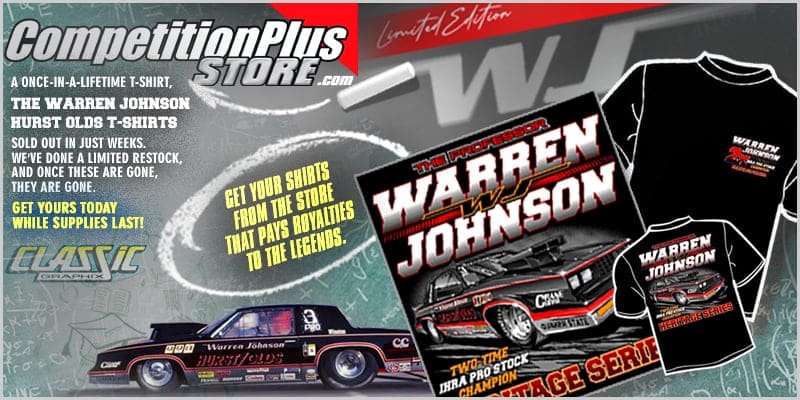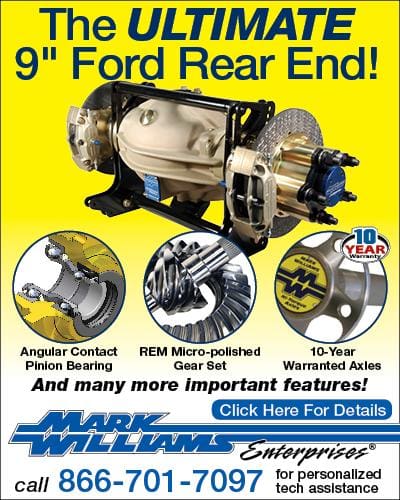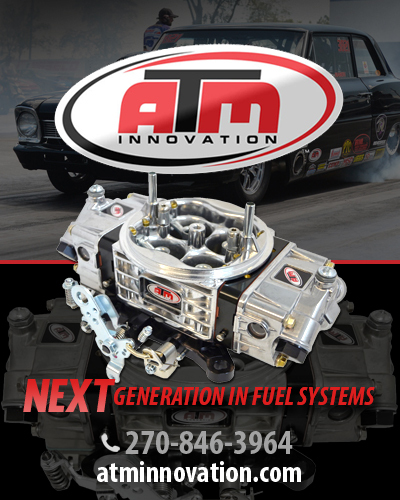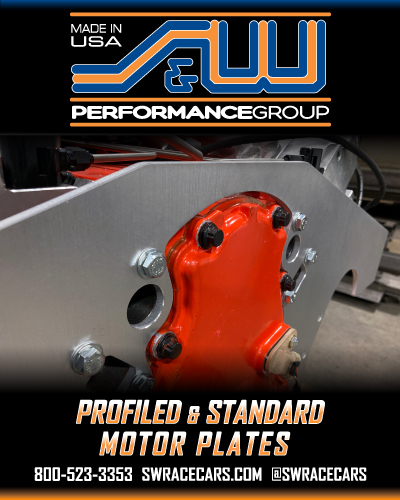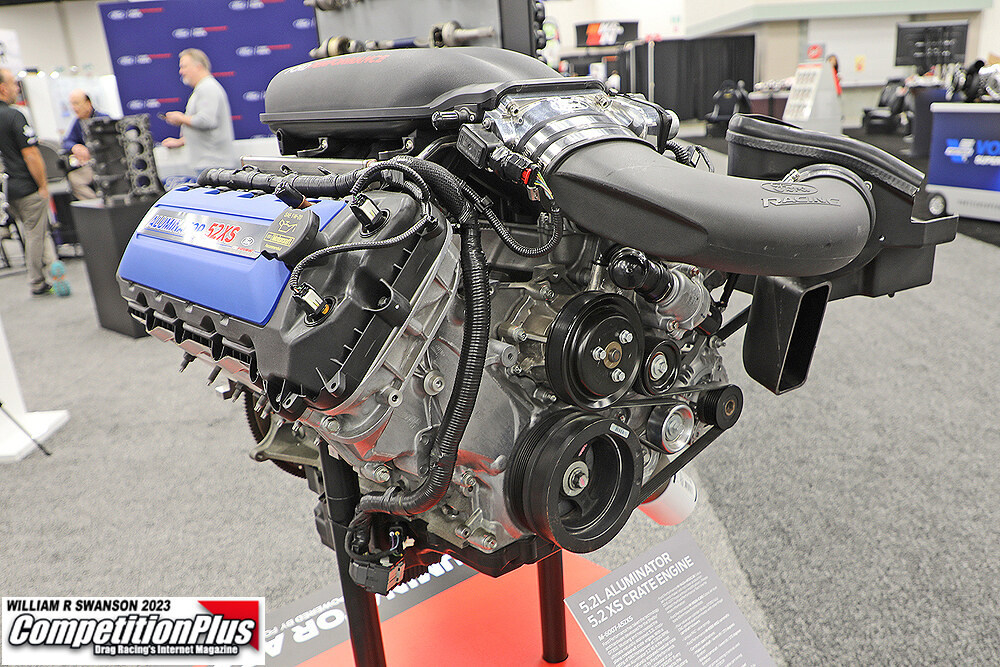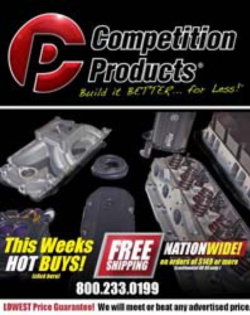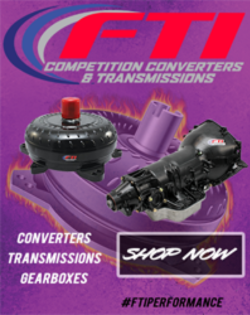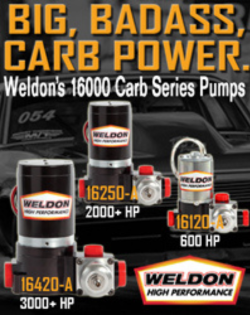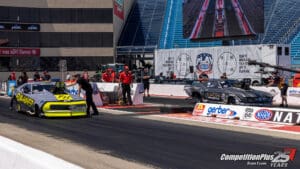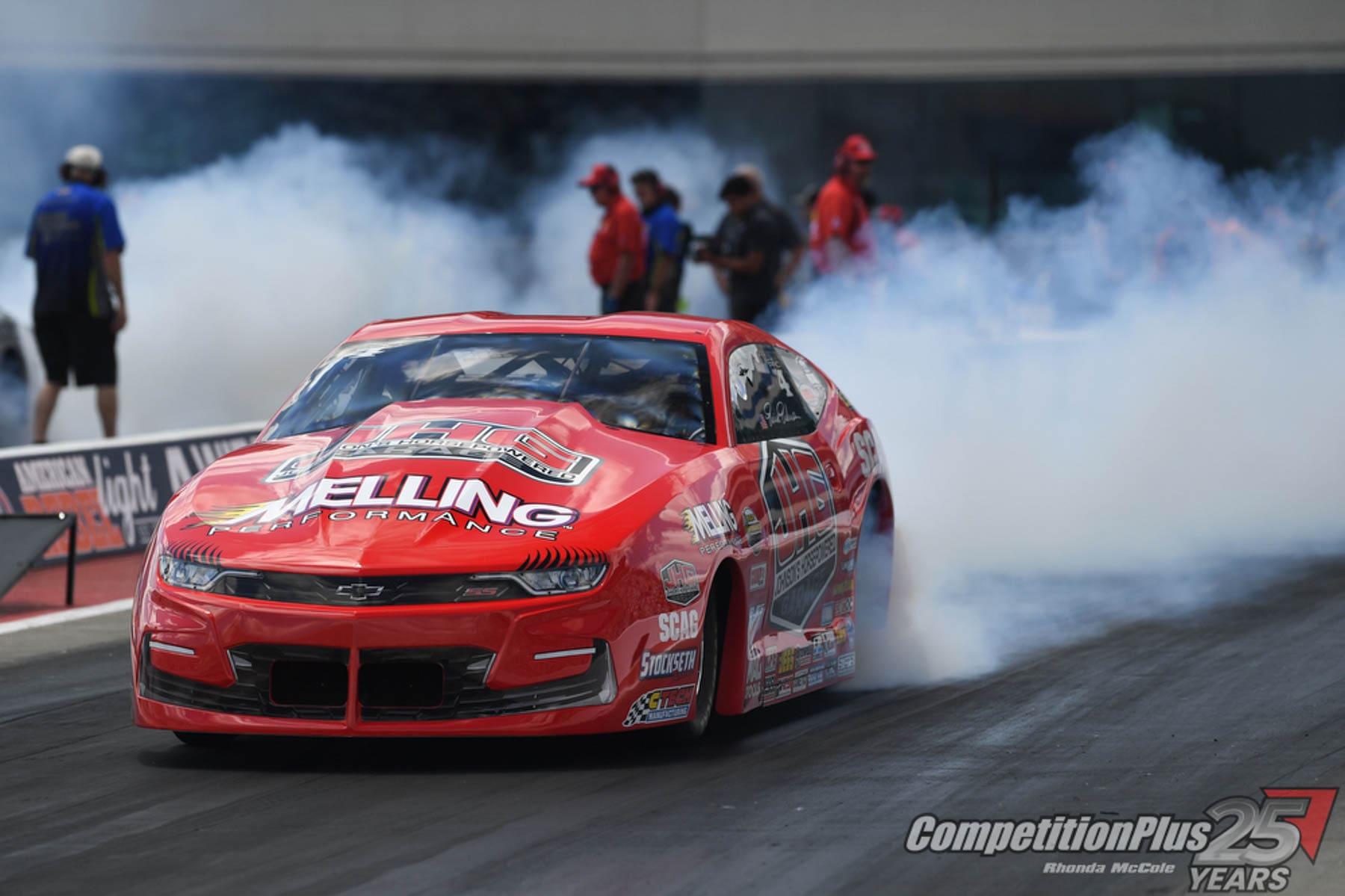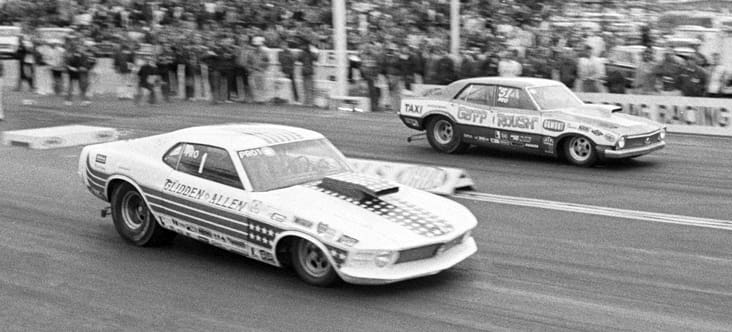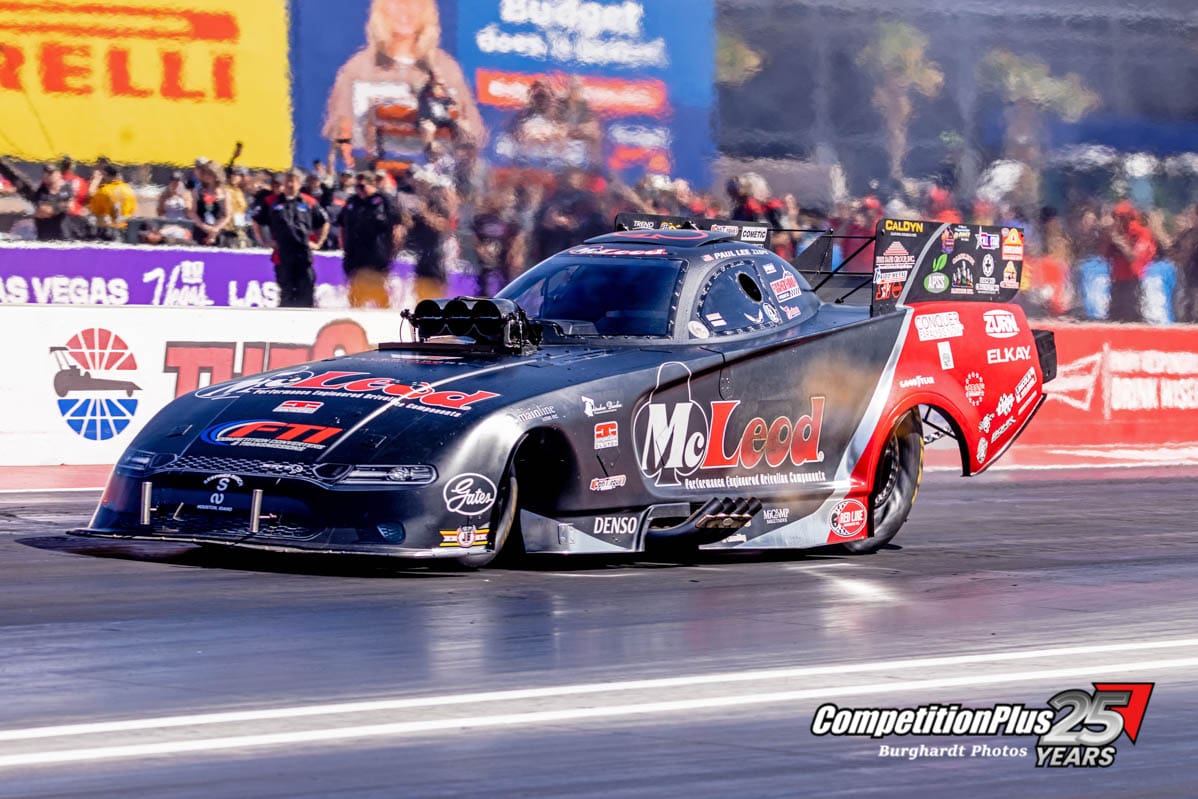Breaking parts and blowing up engines isn’t anything new for drag racers. They’ve been doing it since the sport began some 70 years ago. But when the NHRA lifted the nitro ban in 1963, a whole new way for racers to break engines emerged in the sport.
“Tipping the can” and putting 98% nitro in the fuel tank saw the racers climb to a new level of carnage, with engines and drive-line parts being destroyed. My photos illustrate the repercussions of setting your engine to ‘kill’ in nitro-powered race cars; it’s an almost controlled chaos that makes the sport of drag racing stand out from other motorsports.

Here in 1968 at Riverside, CA., an unknown Top Gas dragster explodes the engine at the finish line. Engine explosions in the Top Gas class were rare, but when they occurred, it was done in style, complete with oil, debris, and flames.

Now you wouldn’t think a Jr. Fuel dragster is capable of engine carnage, but Jimmy Ige and his “Sons of the Rising Sun” A/FD at Bakersfield, Ca. in 1971 showed everyone how it’s done. The engine disintegrated, but due to the strong stainless-steel hoses, the engine remained with the car. Jimmy wasn’t hurt but his wallet died that day.
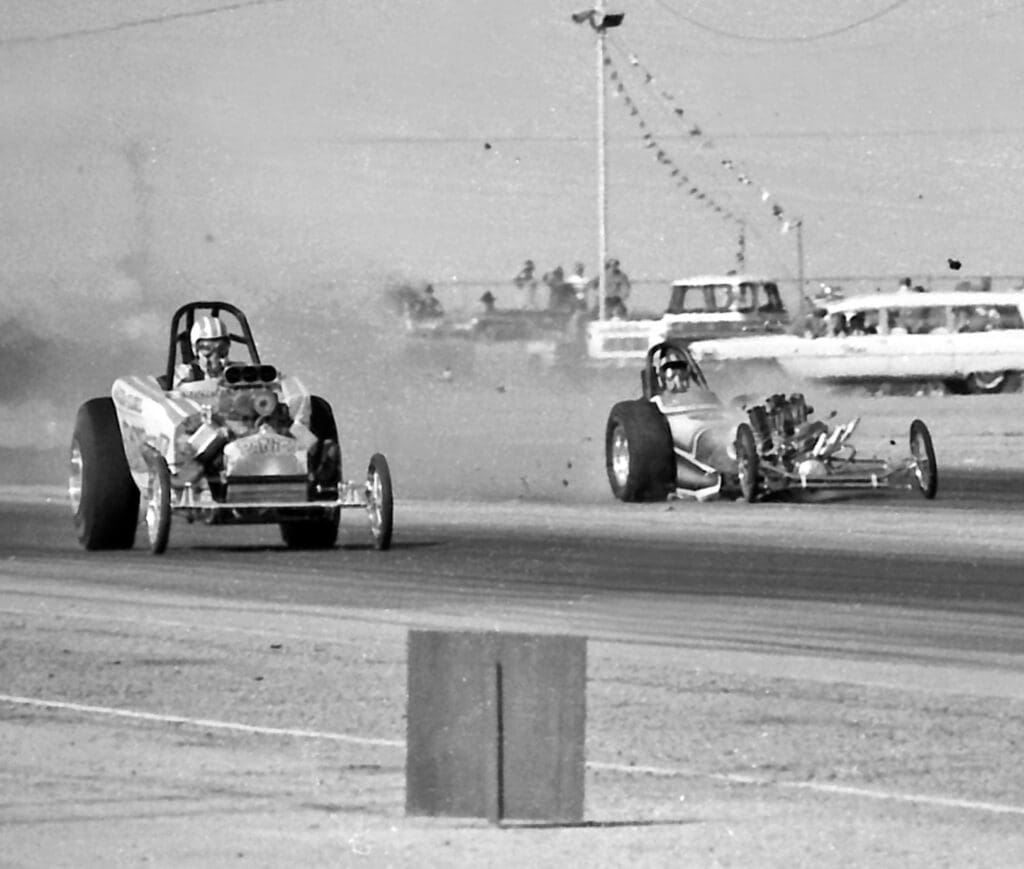

Catastrophic is the only way to describe Bob Dumont’s top fuel dragster meltdown at Tulsa, Oklahoma, in 1972. Driver Larry Brown had his hands full, stopping the now three-wheeled engine-less top fueler. Larry walked away, and Dumont and Brown quickly rebuilt and returned to the Top Fuel wars in a few weeks.
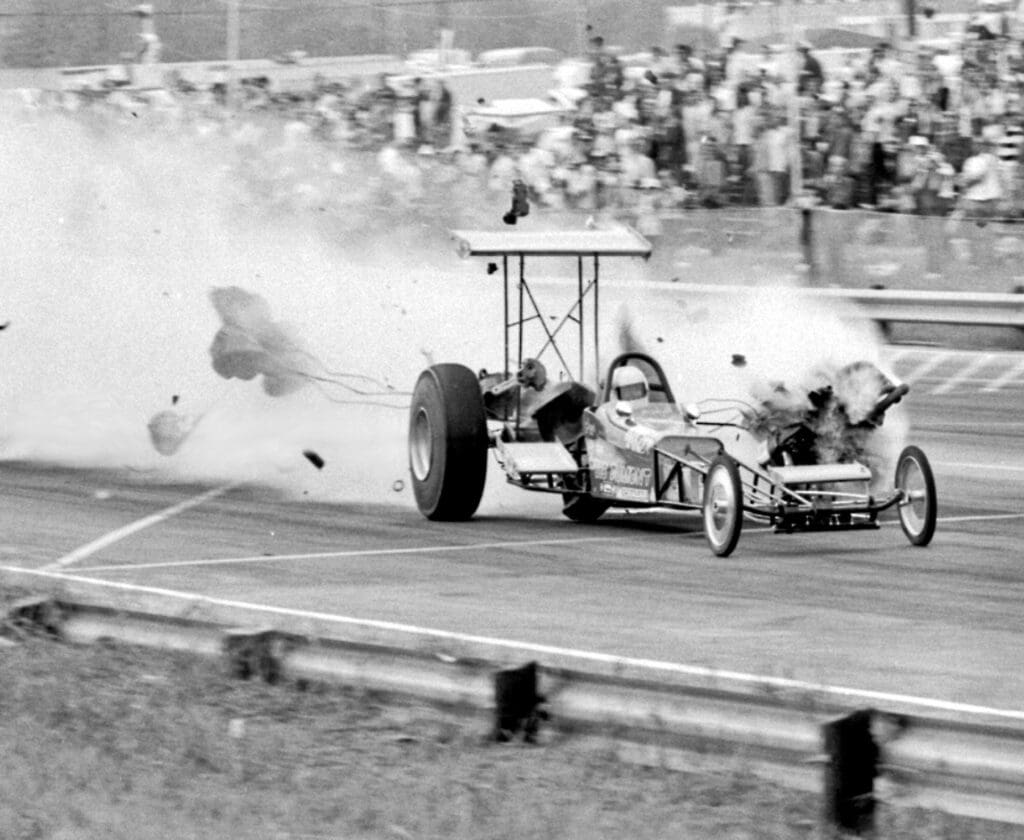
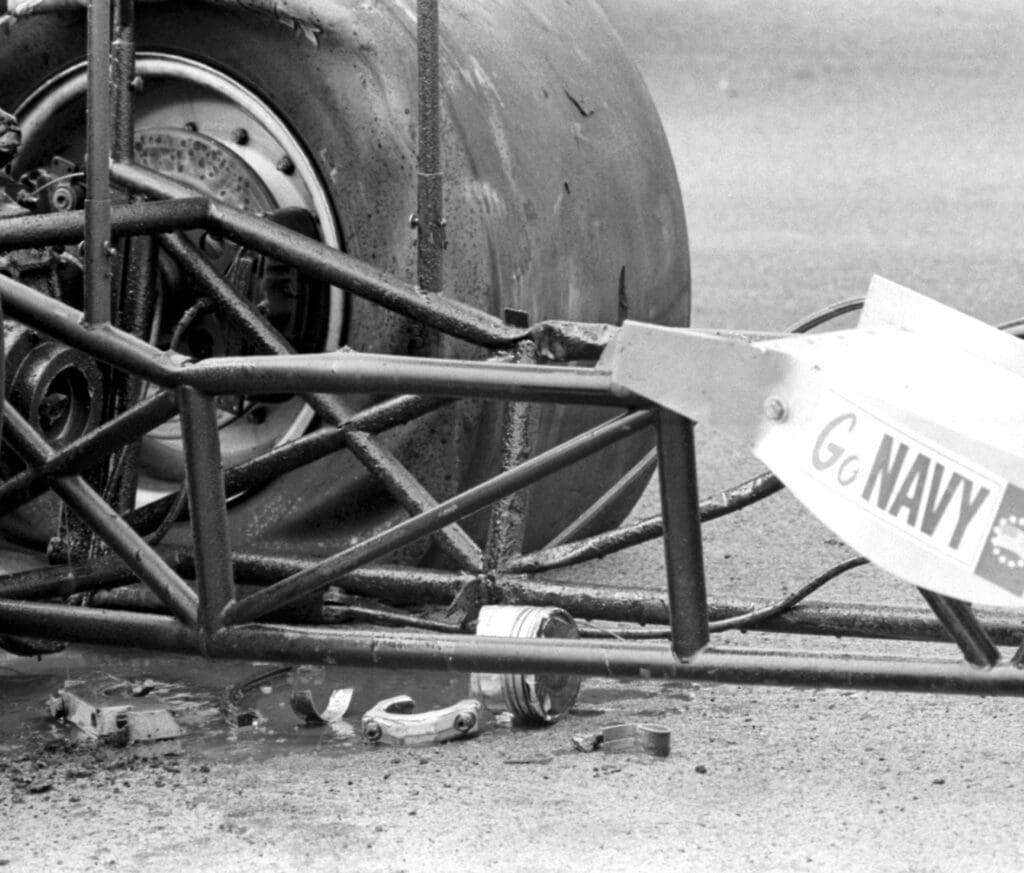
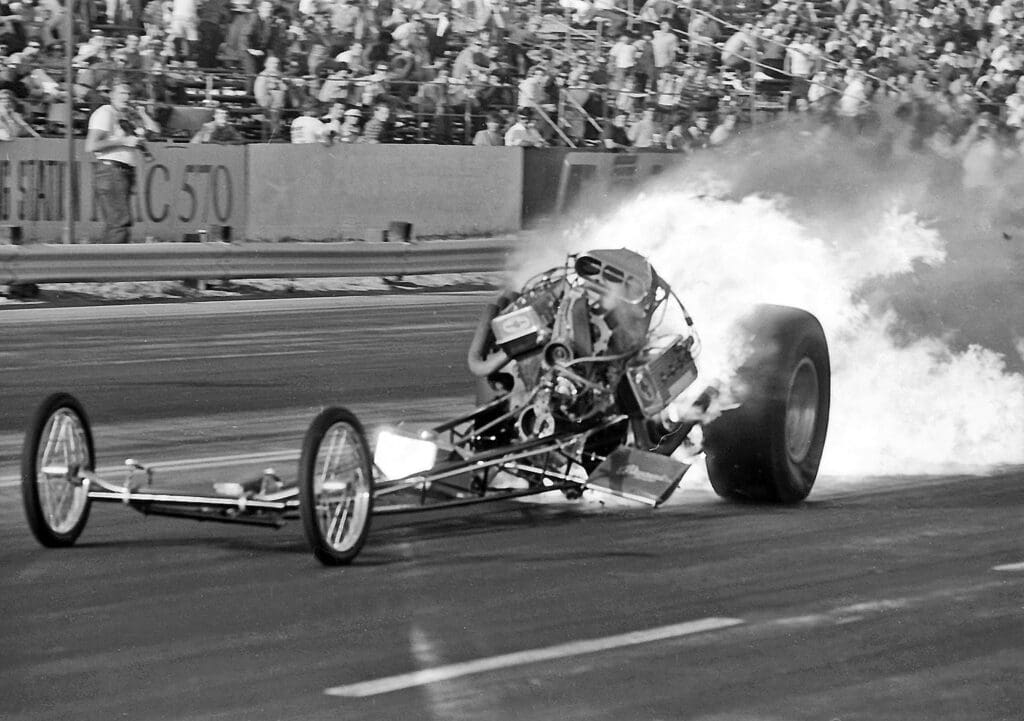
Ironically named the TNT special, the Tolar and Tolbert AA/FD exploded at Irwindale, Ca. in 1972. Driver Tom Tolar went for the ride of a lifetime in the flaming parts, throwing AA/FD. The car pitched the engine over the guard rail onto the return road and continued down the racetrack. Tolar got the engine-less AA/FD stopped and emerged unscathed; they did not rebuild.
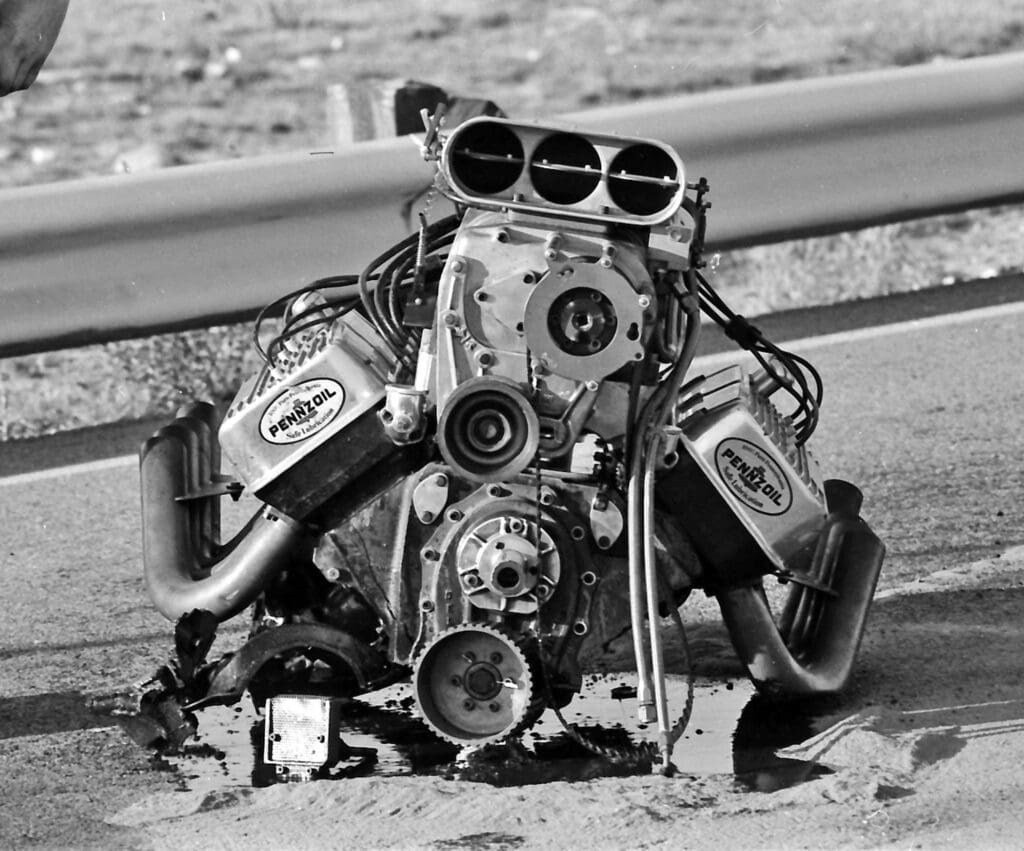

Spending a whole lot of money drag racing in 1972 was blower builder Larry Bowers and his sleek purple top fuel dragster. First, he pitched a clutch and kicked the rods out of the engine at OCIR, then he outdid himself at Bakersfield when his Top Fuel dragster pitched the engine out at the finish line. Again, Larry wasn’t hurt, but his bank account took a big hit, and yes, he returned to race again in 1972.
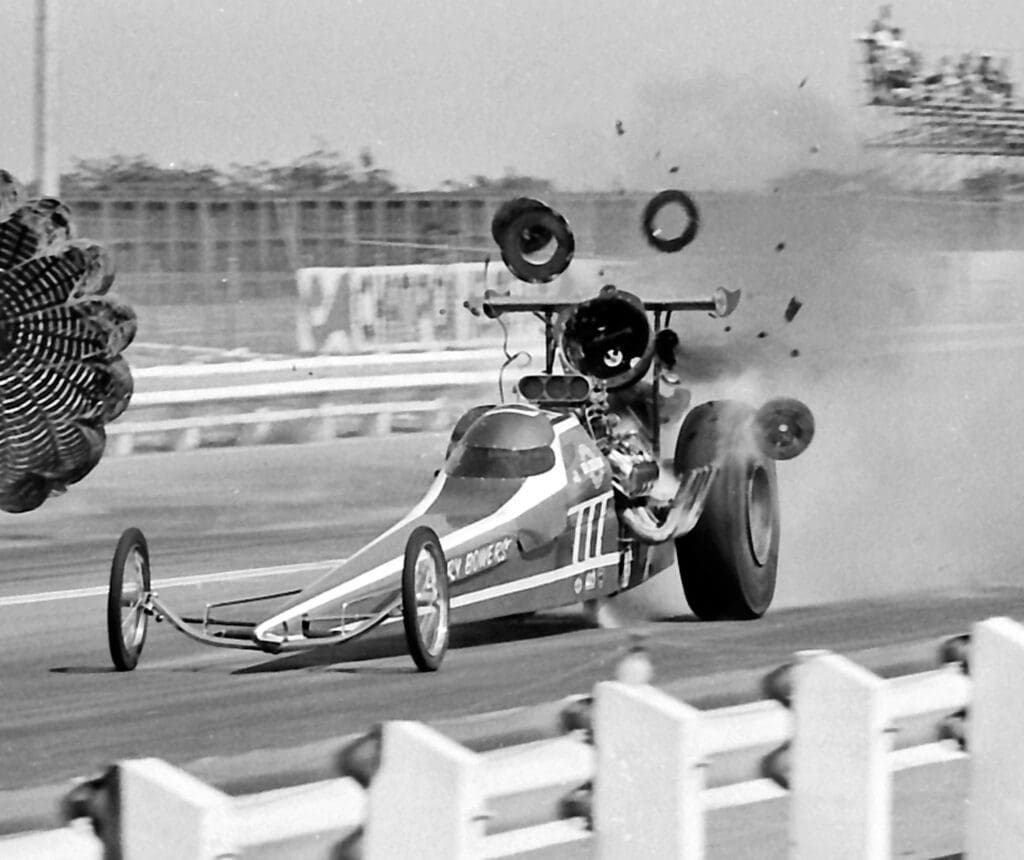
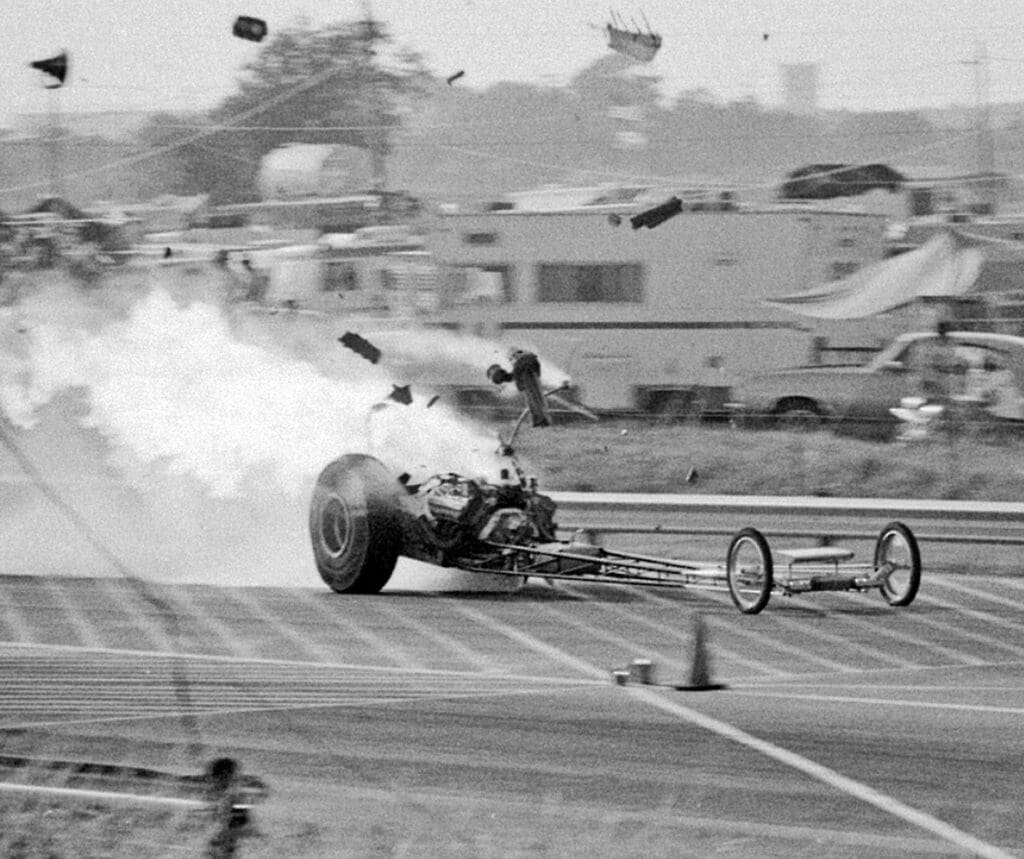
Budget Top Fuel racer Dan Horan used up his racing budget at Tulsa, Oklahoma, in 1972. Horan’s AA/FD destroyed the blower and engine at the finish line in spectacular fashion. Horan got the injured AA/FD stopped but Dan suffered minor burns from the flaming fueler. Being a hard-nosed drag racer he would return to Top Fuel wars.
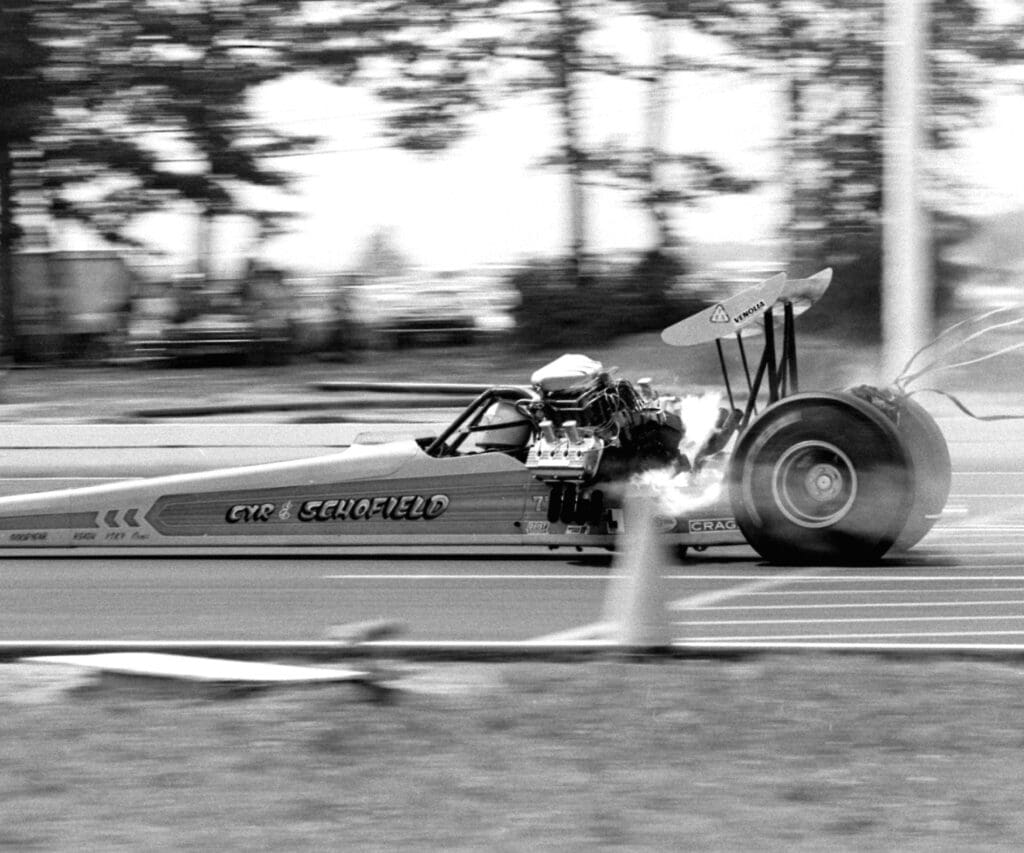
Flip Schofield’s engine woes struck at Englishtown, NJ, in 1972. The Cyr and Schofield Top Fuel dragster attempted to dislodge the engine at the finish line, but strong stainless steel fuel lines prevented it from coming loose on the race track. Flip and company would return ed the following week with new parts and pieces.

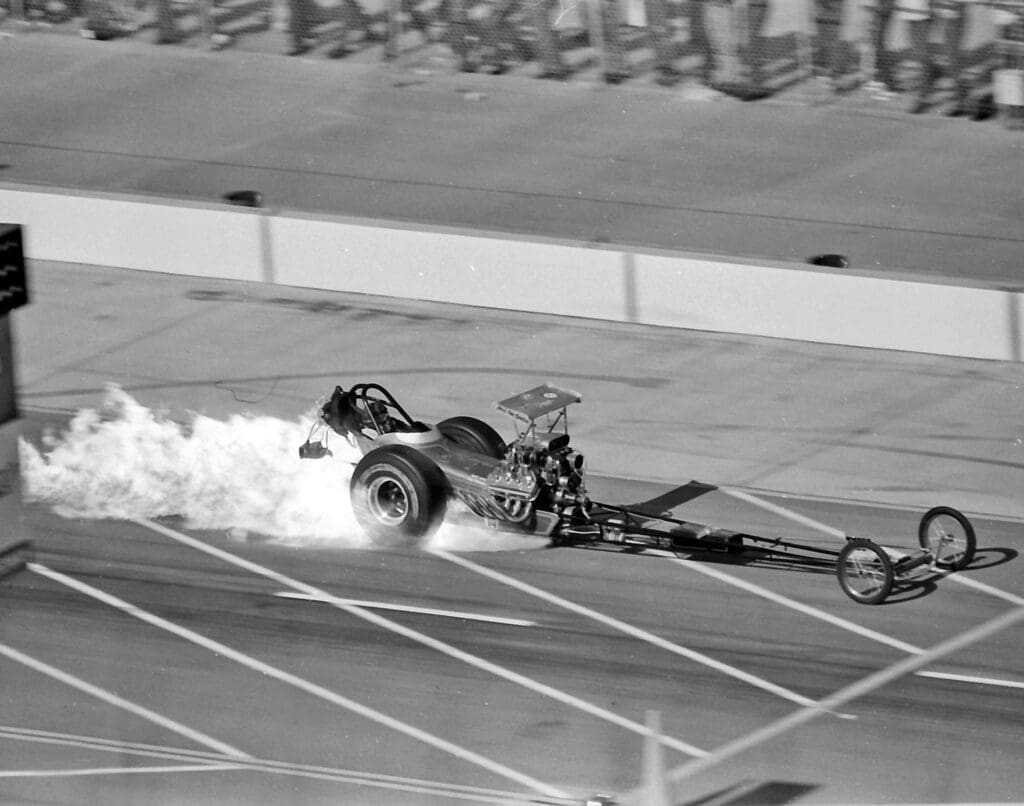
8 – Veteran Top Gas racer Roger “Ramjet” Gates switched to nitro in his “Cracklin’ Rose” AA/FD for the 1972 season. Here, Roger burns one down in his AA/FD in Ontario, CA. Gates sustained some minor burns in the AA/FD inferno, but he would return to SoCal Top Fuel Wars soon after this incident.
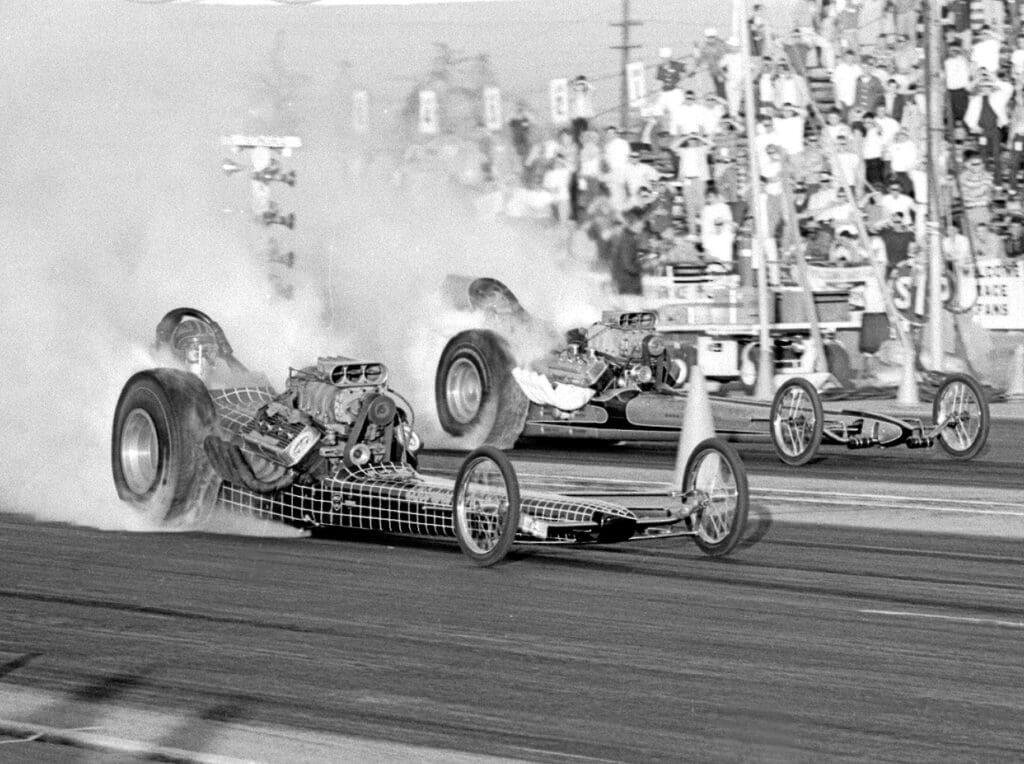
We are in Pomona, CA, in 1967, and it’s Jerry Bivens driving the Bivens and Fisher AA/FD against Gene Goleman driving the Creitz, Greer, and Goleman AA/FD. Look closely at the bottom of Bivens engine, and you will see a rod coming out the side of the block of the 392 Hemi engine.
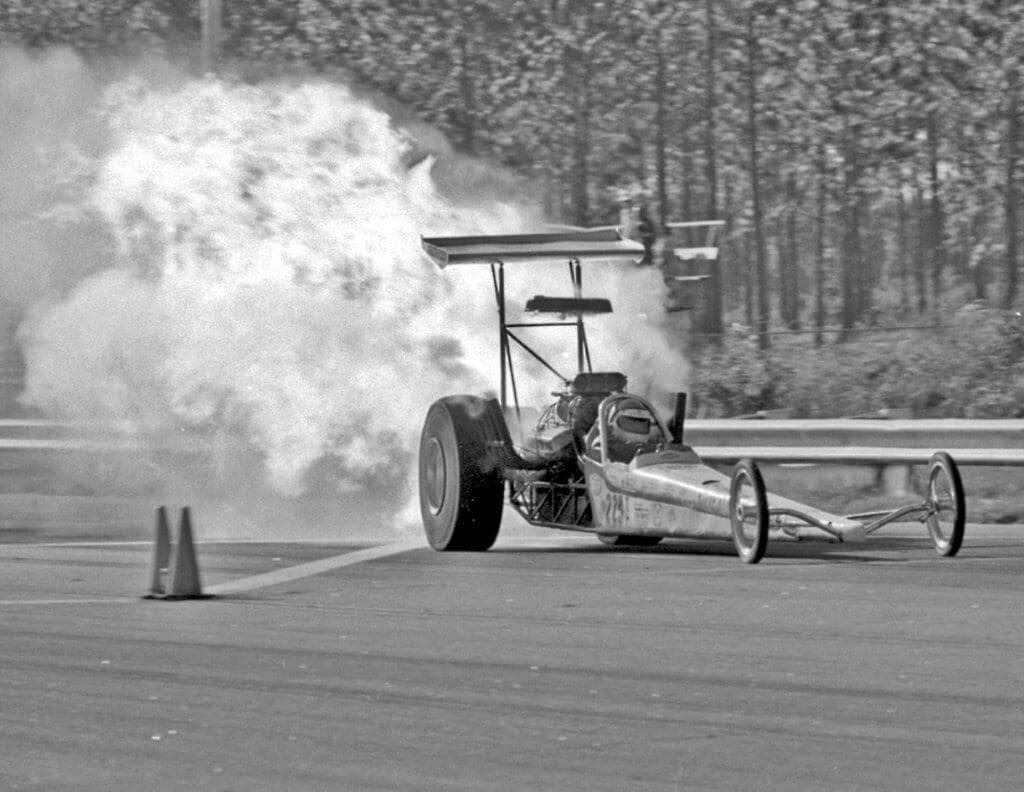
Florida’s James Warren grenades the Chevrolet Top Fuel engine in grand style at Gainesville, Florida, in 1973. Yes, that’s fire and a valve cover flying off the engine of the “Sunshine for Rent” Top Fuel dragster.
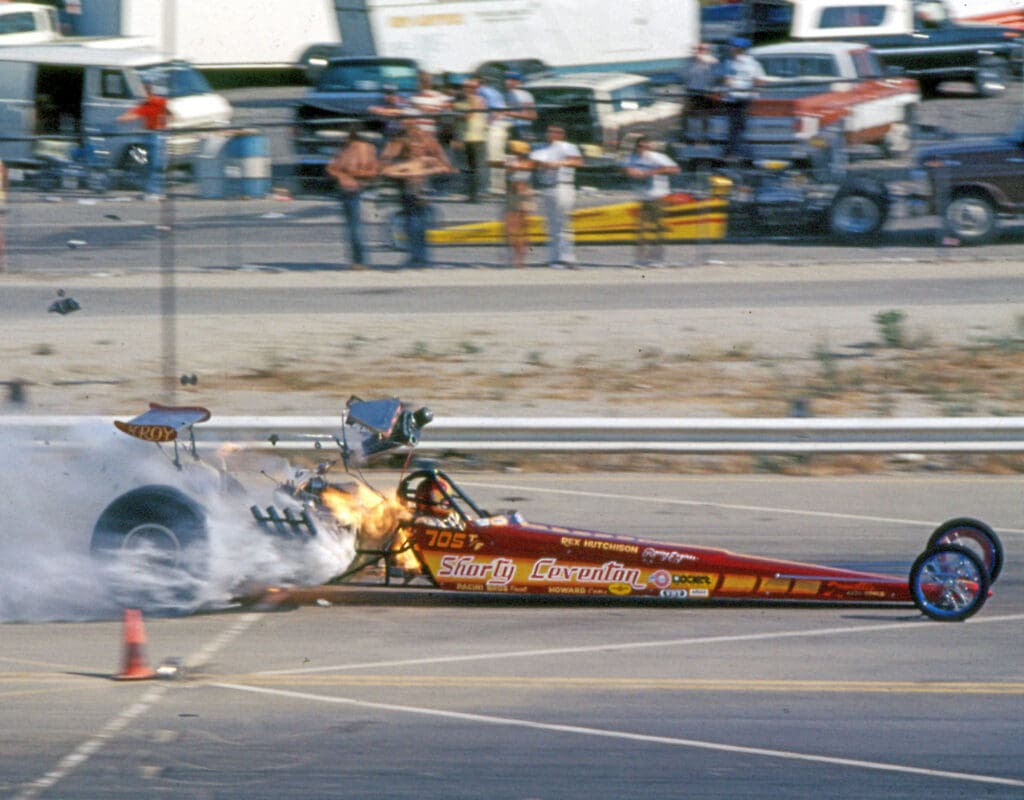
Nor-Cal-based top fuel racer Larry” Shorty” Leventon shows SoCal drag fans how to blow up an engine at Irwindale, Ca. in 1973. Not only did he explode the blower, but he also killed the Chevrolet engine in his Top Fuel dragster.
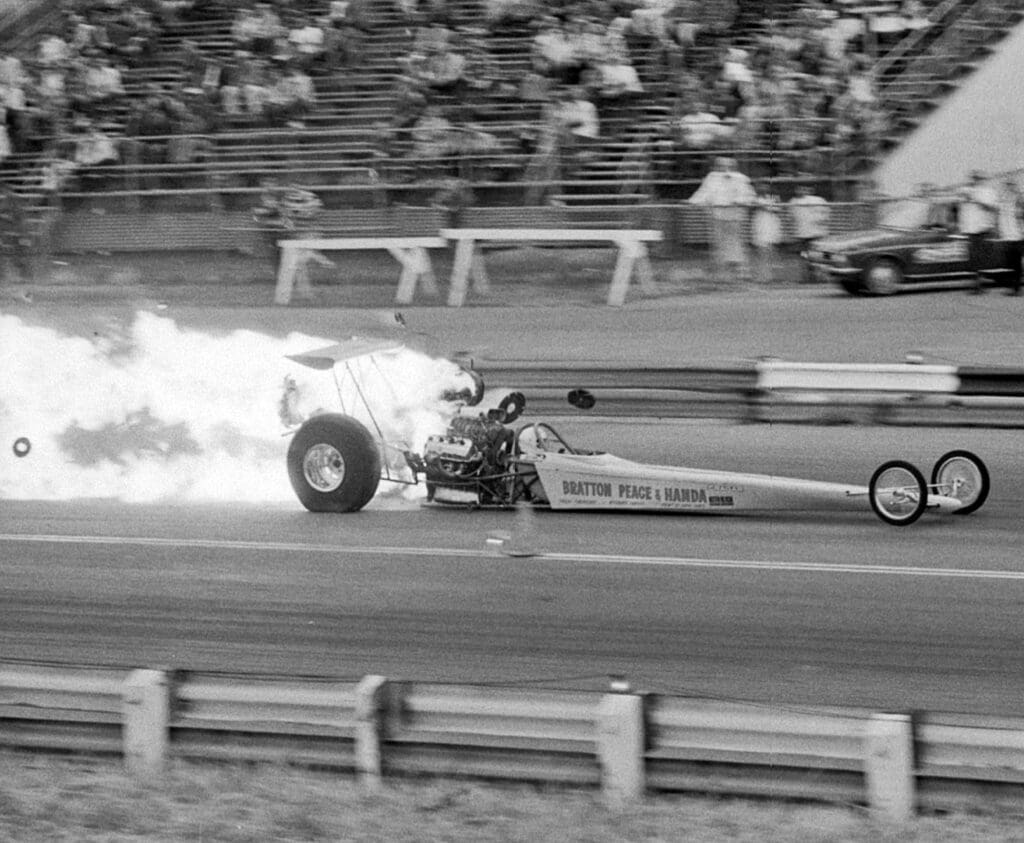
Another NorCal racer, Jim Peace, along with partners Bratton and Handa, decided it would be great to go top fuel racing in 1973. So, Peace sold his Fuel Altered and entered the wild world of Top Fuel dragster racing. The first and only full pass on the car was a disaster at OCIR. The car blew the transmission, clutch, and engine; it also severed the frame rails, separating the rear end from the car. Peace was at the controls, and went for a terrifying ride. He walked away, but the car was a total wreck, never to be seen again.

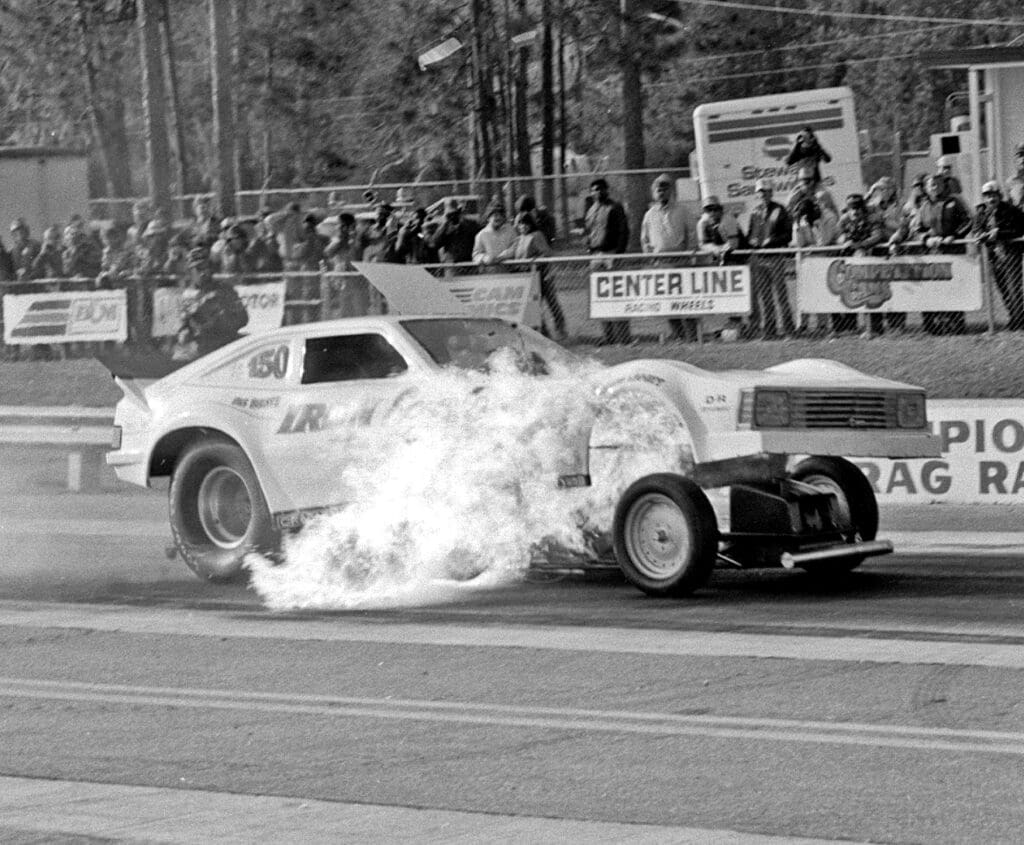
I shouldn’t leave Funny Cars out of the engine carnage, so Dale Bartlett and his “Iron Eagle’ AA/FC will fill that gap. In 1983, Gainesville, Florida, saw Dale pilot his AA/FC just past the Christmas tree, then, “Woof,” fire, parts, and pieces rained upon the track. Nobody was hurt but the “Iron Eagle” that day in Florida.
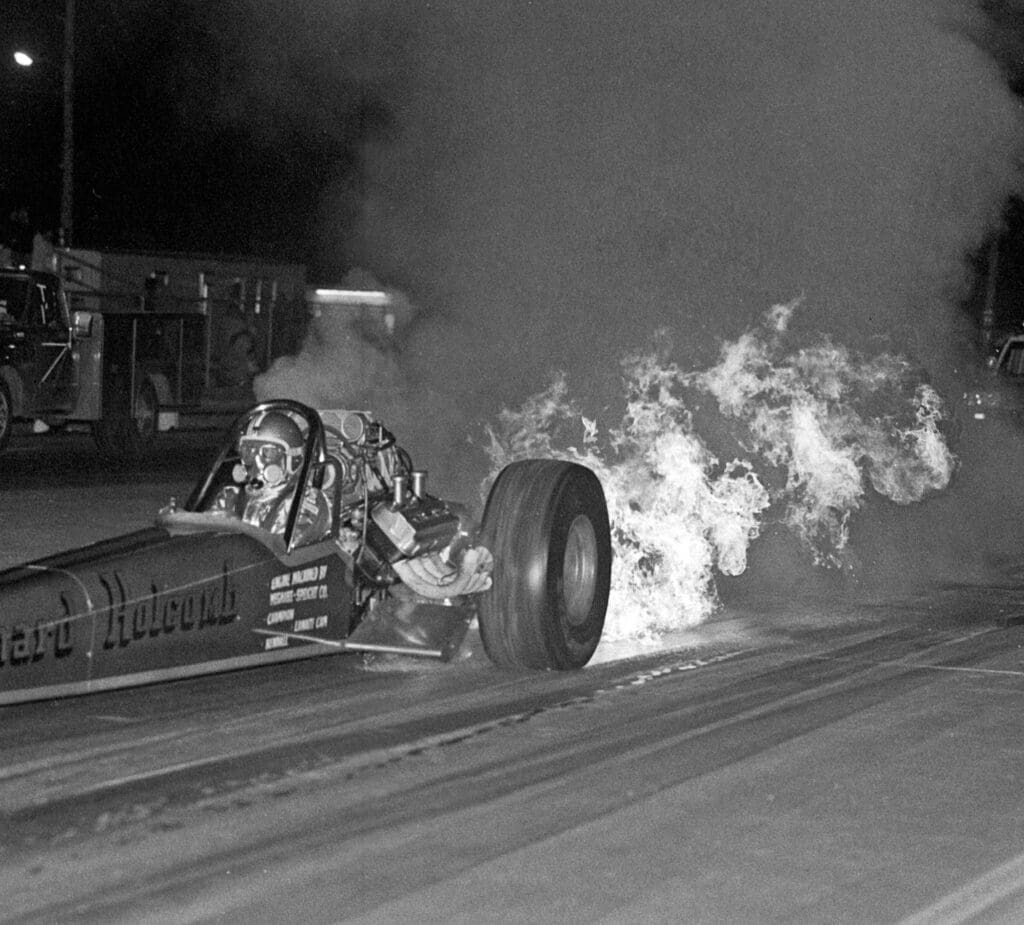
Rear-engine Top Fuel dragsters have been a Godsend for drivers since 1971. Here, in 1971, Richard Holcomb shows why at Lakeland, Florida. At the hit of the throttle, Holcomb’s Top Fuel dragster explodes into a ball of fire and pieces. Yes, those are rods coming out the bottom of the engine and making the race track somewhat “oily.”
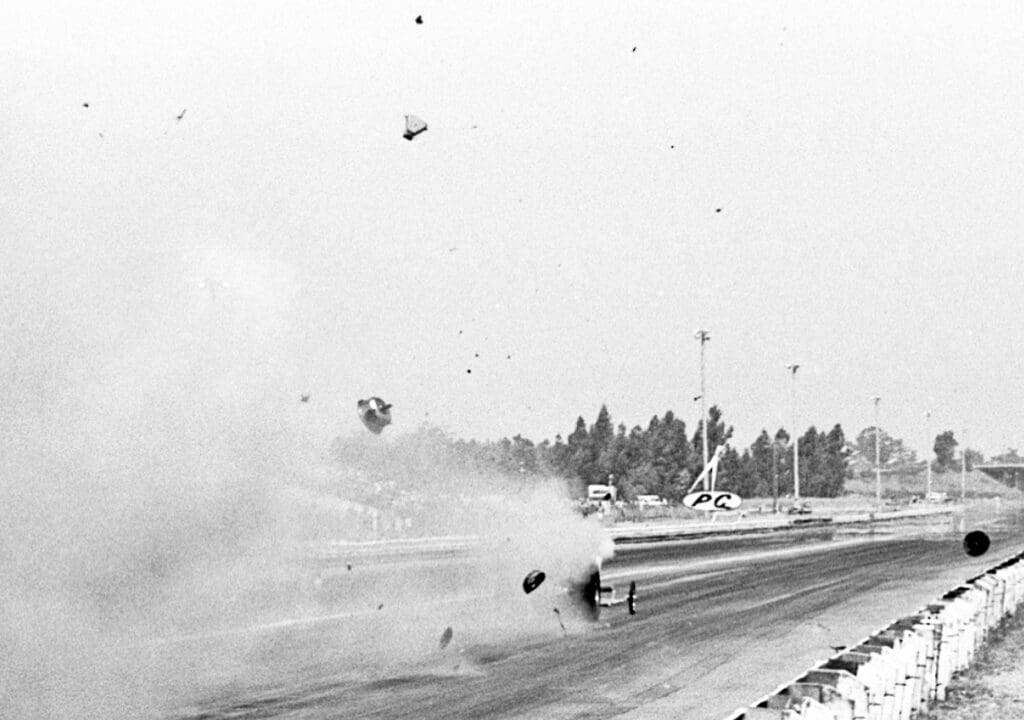
Harry Hibler’s nickname is “Hand Grenade Harry’ and he sure lived up to that moniker at OCIR in 1973 while driving the “Sandman” Top Fuel dragster. Harry just about blew everything out of the car except for the engine block. That’s the blower hat/injectors that are high in the OCIR skies, along with the entire clutch can and a few other assorted parts and pieces of the “Sandman” powerplant. Harry would return to action a few weeks later with a repaired “Sandman” Top Fuel dragster.

And last but not least is Nor-Cal Top Fuel racer Frank Martinez and his “adventure” in engine destruction. Martinez is at Fremont, Ca. in 1970 and has grenaded his 392 Hemi. The wayward fueler is tossing parts and pieces everywhere as Frank is trying to get his goggles off to see where he’s going. That piece next to his head is one of the crankshaft mains that hold the crankshaft in the engine. Under the car, there are rod caps and block pieces. Martinez got his car stopped, but he did suffer from burns from the fire before the engine meltdown.







